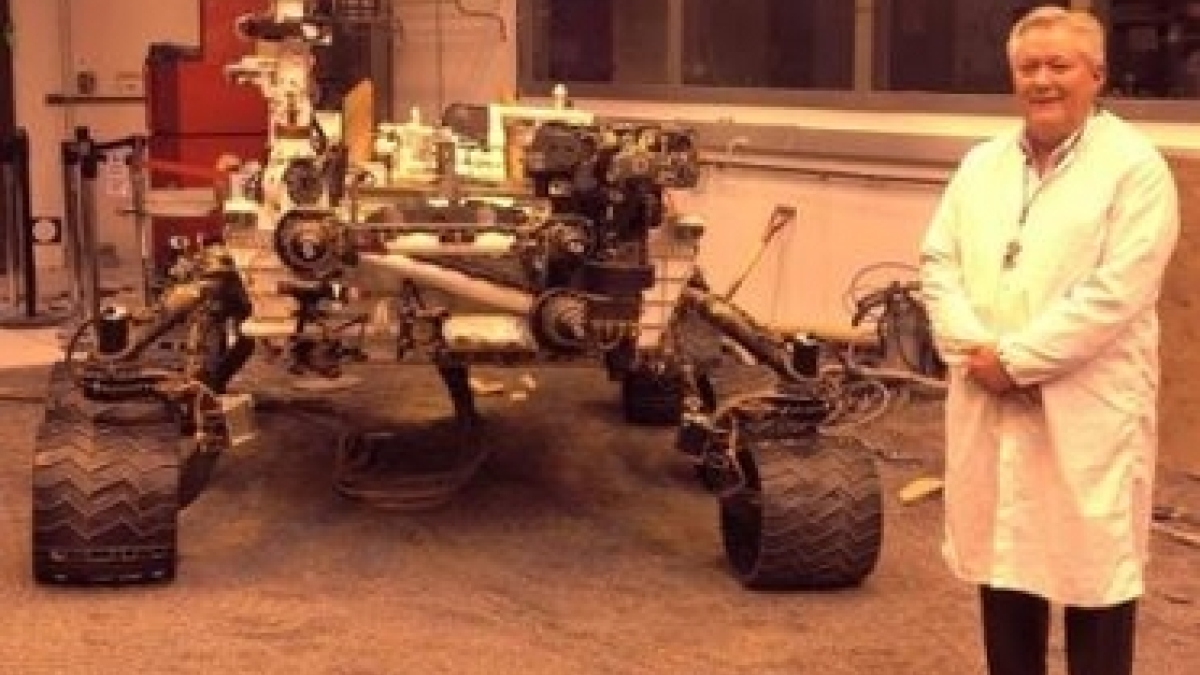Curiosity rover offers clues to puzzle of Mars habitability

NASA’s Mars Science Laboratory (MSL, also known as the Curiosity rover) was sent to determine if Mars was ever hospitable to life. During the 16 months that it has spent sampling the rocks, soils and layers of sedimentary rocks in Gale crater, Curiosity has been piecing together the puzzle of Mars’ past and present habitability potential.
The latest findings indicate that the now barren surface of the planet was indeed capable of supporting life in the past. Analyses of Martian sediment samples show all the hallmarks of a habitable zone.
A series of six papers in this week’s edition of the journal Science describe the main results from Curiosity’s campaign at Yellowknife Bay, the lowest elevation region on the floor of Gale crater. Key results include the discovery of abundant water-bearing clay minerals and other mineral, chemical and geologic findings related to a past warmer, wetter climate regime.
Each of the papers was produced by a large team, including authors from Arizona State University.
“Shortly after we landed, Curiosity found evidence that liquid water had flowed across the surface long ago in Gale crater,” says Jim Bell, professor in ASU’s School of Earth and Space Exploration, and an author on four of the papers. “These new results, however, come from the first drilling activities ever performed on Mars, and they show that in addition to surface water, there was likely an active groundwater system in Gale crater that significantly weathered ancient rocks and minerals.”
Bell plays a leading role in the targeting and interpretation of images obtained by Curiosity’s science cameras, especially the Mast Camera (Mastcam) investigation, for which he serves as deputy principal investigator.
Curiosity’s state-of-the-art imaging system, comprised of 17 cameras, is just one part of the sophisticated suite of science instruments the rover relies on to acquire its information. Many ASU professors, researchers and students from the School of Earth and Space Exploration, as well as alumni, are involved with the rover’s instruments.
In addition to Bell, MSL Science Team members at ASU include: Jack Farmer (professor), Meenakshi Wadhwa (professor), Alberto Behar (research professor), Lauren Edgar (postdoctoral research associate), Craig Hardgrove (postdoctoral research associate), Austin Godber (research staff member) and Danika Wellington (graduate student).
“We’ve got a great team at ASU working to help make these results from Curiosity possible,” says Bell. “Using our new image processing, laboratory and mission operations facilities, students, staff and faculty are getting some real hands-on training and experience on an active and exciting NASA planetary exploration mission.”
Farmer, a science team member for the Chemistry and Mineralogy (CheMin) instrument, is an author on two of the papers, both of which address the potential for past habitability at Yellowknife Bay and consider the potential of the environments represented for preserving fossil biosignatures.
The other papers review the current assessment and potential for organic building blocks (carbon-containing compounds) on Mars, as well as the inorganic elements making up rocks and soils, and the radiation environment. Each of the papers focuses on a broad theme of the MSL mission: geologic history, geochemistry, habitability and the current surface climate and radiation environment.
The results in these papers are all major new pieces to the puzzle of habitability on Mars, and these results will certainly influence upcoming decisions about the next generation of orbiters, landers and rovers to be sent to Mars by NASA and other space agencies.
In the meantime, Curiosity is getting closer to the base of Mt. Sharp, an ancient mound of layered sedimentary rocks, where the team will begin the next phase of their mission – climbing up through sediments spanning much of the ancient history of the Red Planet.
“Finding past environments on Mars that could have sustained life as we know it is an overarching goal of the mission," says Farmer. "There is a lot of synergy between the results from each of these papers, with clear connections to understanding the past and present habitability of Mars. From what we’ve seen, the sediments in Yellowknife Bay record important features consistent with an ancient habitable environment – evidence for liquid water, elemental building blocks needed by life and potential energy sources.”
As promising as these initial results are, the excitement continues to mount for scientists looking forward to many additional discoveries ahead.
The School of Earth and Space Exploration is an academic unit is the College of Liberal Arts and Sciences.